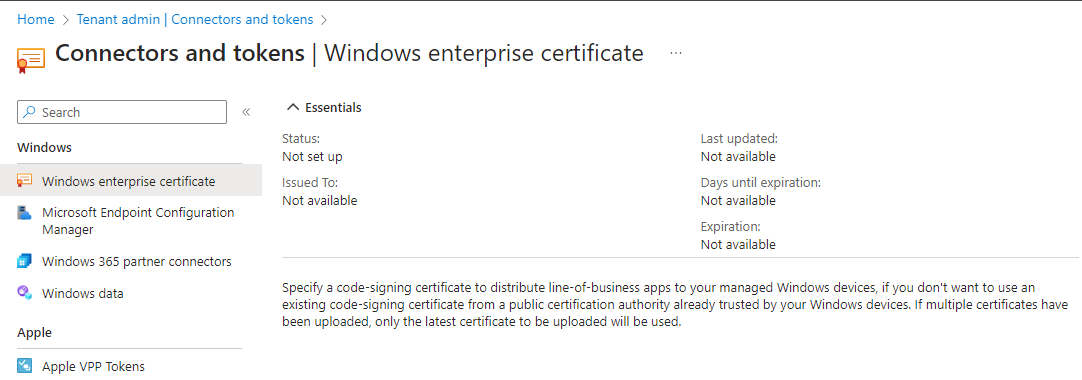Introduction
Intune is a cloud-based service that allows you to manage and secure your organization’s devices, apps, and data. With Intune, you can control how your employees’ access and use corporate resources, enforce compliance policies, and protect sensitive information.
But Intune is not a one-size-fits-all solution. You can customize Intune to fit your organization’s needs and preferences, depending on your industry, size, structure, and objectives. In this blog post, we will show you how to customize Intune in four key areas: device management, app management, data protection, and reporting.
Device Management
Device management is the core functionality of Intune. It allows you to enrol, configure, monitor, and update your organization’s devices, whether they are Windows, iOS, Android, or macOS. You can also apply security policies, such as password requirements, encryption settings, and device compliance rules.
To customize device management, you can use the following features:
- Device enrolment: You can choose how to enrol your devices, either automatically or manually, and set up enrolment restrictions, such as limiting the number of devices per user or blocking certain device types.
- Device configuration: You can create and assign device configuration profiles, which are collections of settings that define how devices should work. For example, you can configure Wi-Fi, VPN, email, and browser settings.
- Device compliance: You can create and assign device compliance policies, which are rules that determine whether devices meet your security standards. For example, you can require devices to have a PIN, be encrypted, or have the latest OS version.
- Device actions: You can perform actions on devices, such as locking, wiping, restarting, or syncing them. You can also create custom actions, such as sending a message, installing an app, or running a script.
Want to know more about Device Management? Run remote actions on devices with Microsoft Intune | Microsoft Learn
App Management
App management is another key functionality of Intune. It allows you to deploy, manage, and secure your organization’s apps, whether they are web, mobile, or desktop apps. You can also control how your employees’ access and use apps, such as requiring authentication, blocking copy and paste, or applying app protection policies.
To customize app management, you can use the following features:
- App deployment: You can choose how to deploy your apps, either by assigning them to users or devices, or by making them available in a self-service portal. You can also set up app configuration policies, which are settings that define how apps should behave.
- App protection: You can create and assign app protection policies, which are rules that protect your organization’s data within apps. For example, you can encrypt data, restrict data transfer, or wipe data remotely.
- App monitoring: You can monitor the status and performance of your apps, such as the installation status, the app version, the app usage, and the app errors. You can also collect feedback from users, such as ratings, reviews, and crash reports.
- App lifecycle: You can manage the lifecycle of your apps, such as updating, retiring, or deleting them. You can also create app groups, which are collections of apps that share the same settings or policies.
Want to know more about App Management? What is app management in Microsoft Intune? | Microsoft Learn
Data Protection
Data protection is another important functionality of Intune. It allows you to safeguard your organization’s data, whether it is stored on devices, in apps, or in the cloud. You can also prevent data loss, leakage, or theft, by applying encryption, access control, and data classification policies.
To customize data protection, you can use the following features:
- Data encryption: You can encrypt your data at rest and in transit, using BitLocker for Windows devices, File Vault for macOS devices, or Intune-managed encryption for iOS and Android devices. You can also encrypt your data in the cloud, using Azure Information Protection.
- Data access: You can control who can access your data, when, where, and how, using conditional access policies. For example, you can require users to have a compliant device, a valid identity, a secure location, or a trusted app.
- Data classification: You can classify your data according to its sensitivity, using sensitivity labels. For example, you can label your data as public, internal, confidential, or secret. You can also apply protection actions to your data, such as watermarking, auditing, or blocking external sharing.
Want to know more about Data Protection? Data protection framework using app protection policies – Microsoft Intune | Microsoft Learn
Reporting
Reporting is the final functionality of Intune. It allows you to monitor and analyse your organization’s Intune environment, using dashboards, charts, graphs, and tables. You can also export, filter, sort, and search your data, using various tools and formats.
To customize reporting, you can use the following features:
- Intune portal: You can access the Intune portal, which is the web-based interface that lets you manage and view your Intune data. You can use the portal to see the overview, the devices, the apps, the users, the groups, and the alerts.
- Intune reports: You can generate and download Intune reports, which are pre-defined or custom reports that provide detailed information about your Intune data. You can use the reports to see the device inventory, the device compliance, the app inventory, the app usage, and the app protection.
- Intune data warehouse: You can connect to the Intune data warehouse, which is a cloud-based database that stores historical data about your Intune environment. You can use the data warehouse to create custom queries, visualizations, and reports, using tools such as Power BI, Excel, or SQL.
- Intune logs: You can collect and analyse Intune logs, which are records of events and activities that occur in your Intune environment. You can use the logs to troubleshoot issues, audit actions, and investigate incidents, using tools such as Log Analytics, Azure Monitor, or Event Viewer.
Want to know more about reporting? Microsoft Intune reports – Microsoft Intune | Microsoft Learn
